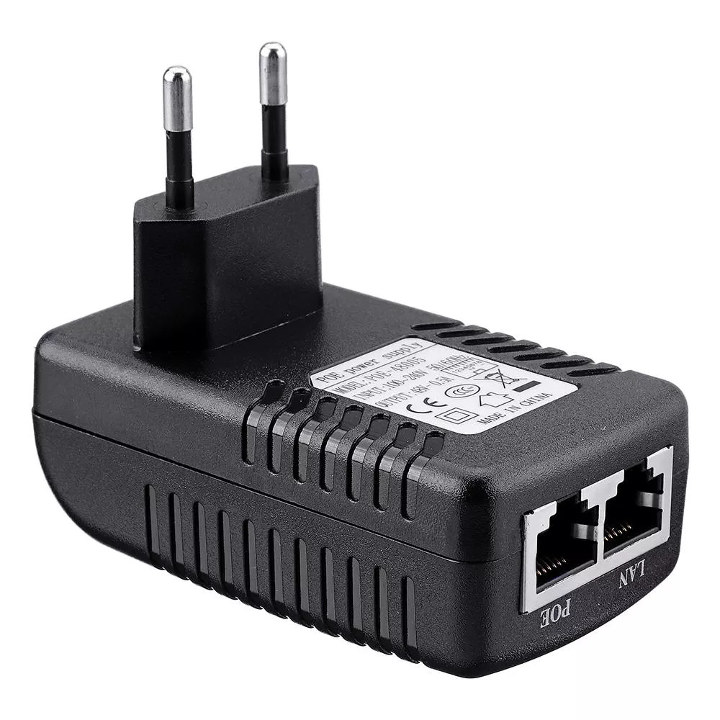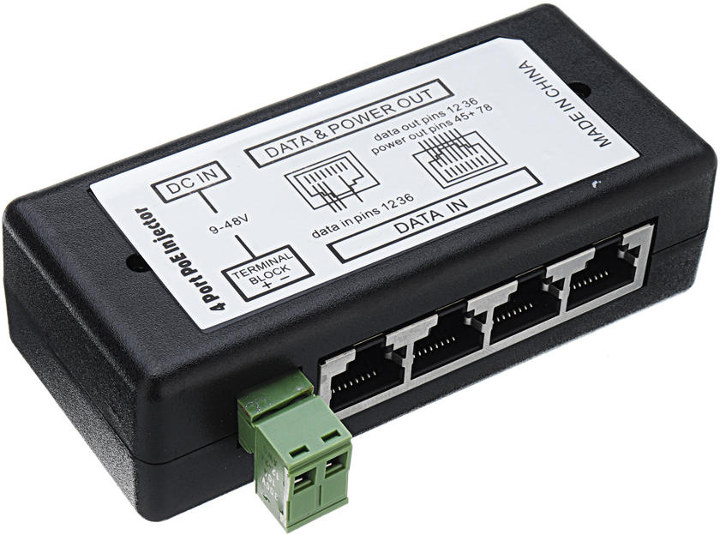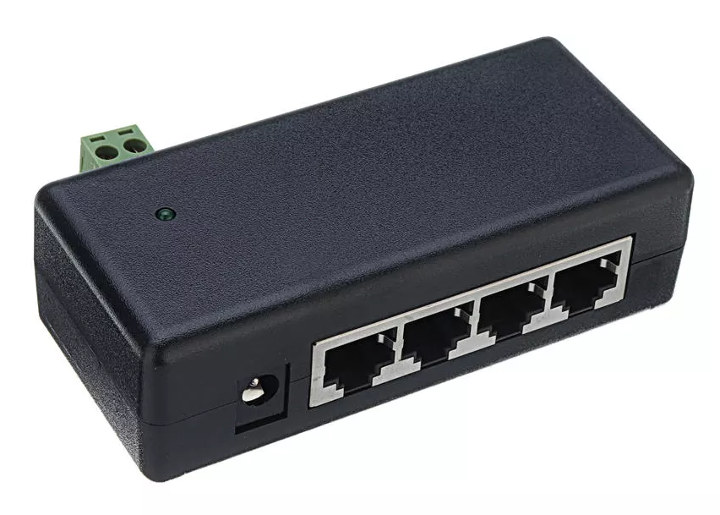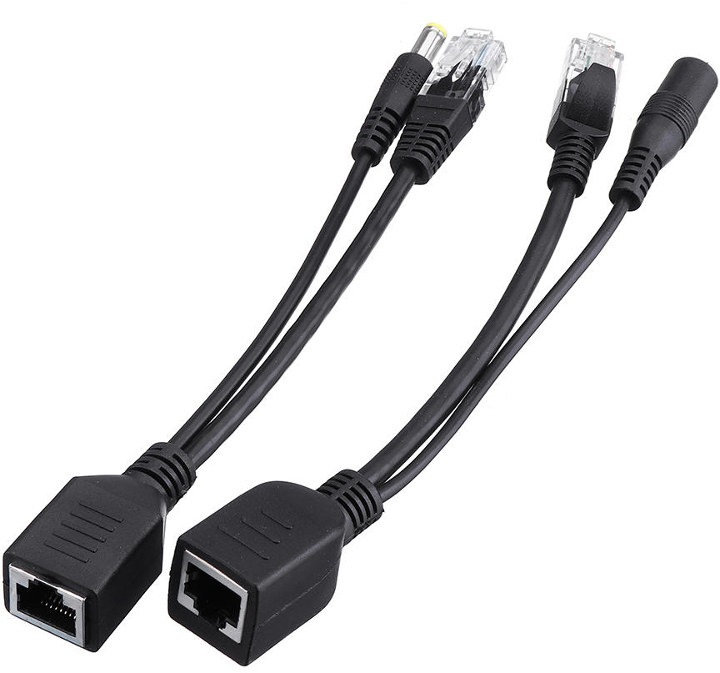I regularly browse new arrivals feeds of popular websites to look out for interesting products, and I’ve noticed Banggood has several inexpensive PoE plugs and injectors going for around $6, which is quite cheaper than I would have expected.
Apart from MatchX LoRaWAN gateway, I’ve never really used PoE to power devices, but I may soon have another look on Raspberry Pi 4 board with a third-party PoE HAT. PoE is mostly interesting if you need to run long cables to your boards or IP cameras since using a single Ethernet cable for data and power saves on cabling.
24V/48V PoE Plugs for the European market
 Banggood had three PoE plugs with prongs made for the European market:
Banggood had three PoE plugs with prongs made for the European market:
- 48V/0.5A (24W) PoE Wall Plug
- 12V/1A (12W) PoE Wall Plug
- 24V/1A (24W) POE Wall Plug
All three plugs are visually identical with a LAN port to connect to your router, and a PoE port adding power to the data signal, and only differ in terms of voltage and power. The one you’d select will depend on your target device specifications, and for example, the official Raspberry Pi PoE HAT supports a 37V to 57V input range, so the 48V/0.5A PoE wall plug should be suitable.
All three models go for the same $6.25 including shipping for orders over $49.99.
4-Port PoE Injector
If you plan to power more than one device over PoE, they also got you covered with a 4-port PoE Injector supporting the 802.11af standard. The device comes with 4 Ethernet (RJ45) ports to be connected to your router/switch, a 2-pin terminal block and 5.5/2.1mm jack to which you can connect your own power supply with voltage ranging from 9 to 48V, and 4 PoE ports than combine data and power to feed into your IP cameras or boards.
The PoE injector sells for $5.76 including free shipping and is more flexible than the other solution since you have to bring your own power supply.
PoE Injector & Splitter Cables
Another way to power any devices with PoE it is by using an injector cable as shown above together with a splitter cable. The injector cable is connected to your router, and a power supply (5V, 12V, 24V, or 48V supported), then you run your long Ethernet cable between the injector and splitter cables, and connect the latter’s Ethernet and 5.5/2.1mm power jack to your target board or device.
This is by far the cheapest method since you don’t need to acquire PoE compatible hardware. For example, by adding a 5.5/2.1mm to micro USB adapter, you could power your Raspberry Pi 3 Model B+ over PoE without having to spend $20 on the PoE HAT. The injector and splitter cables set only costs $3.38.
Now Banggood does not have the exclusivity on such PoE accessories, and you’ll find interesting options on eBay and Aliexpress as well, even as low as $1 per cables sets if you purchase in small quantities.
What I’m less clear about are safety issues especially for the wall plugs since I don’t see any UL marking, reliability, and potential compatibility challenges of such accessories. Feel free to comment if you have experience with PoE.

Jean-Luc started CNX Software in 2010 as a part-time endeavor, before quitting his job as a software engineering manager, and starting to write daily news, and reviews full time later in 2011.
Support CNX Software! Donate via cryptocurrencies, become a Patron on Patreon, or purchase goods on Amazon or Aliexpress







